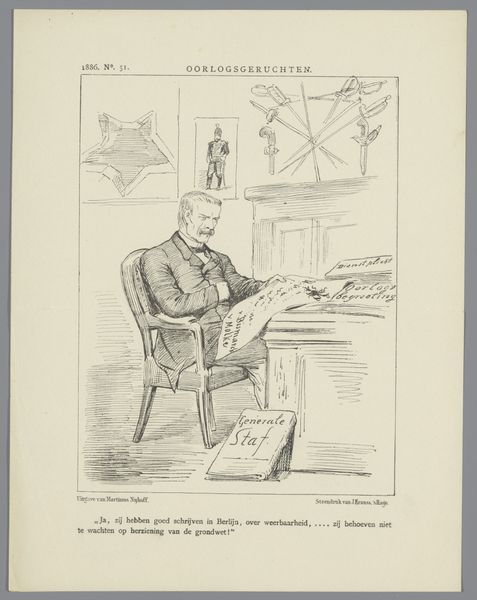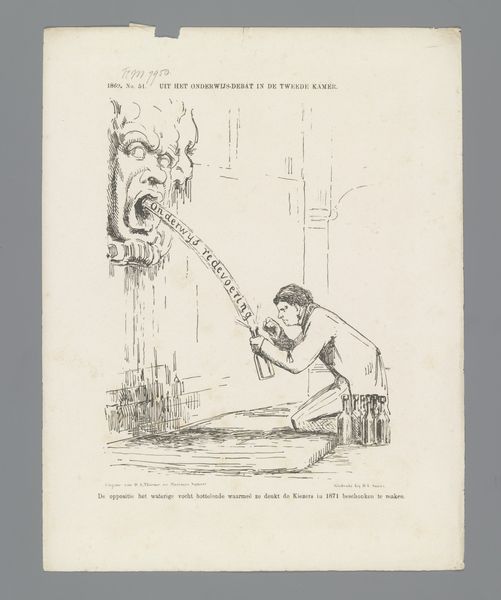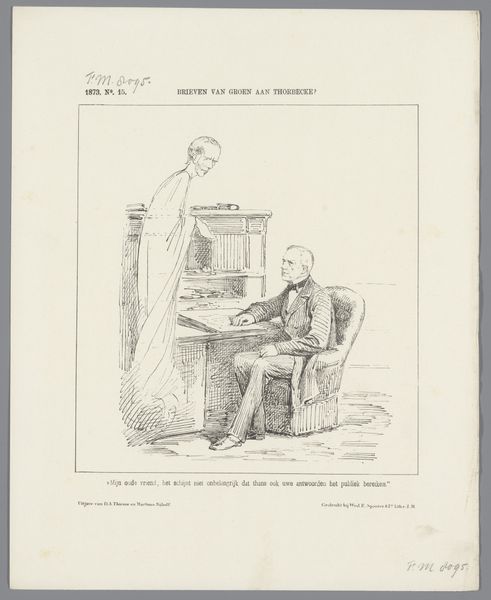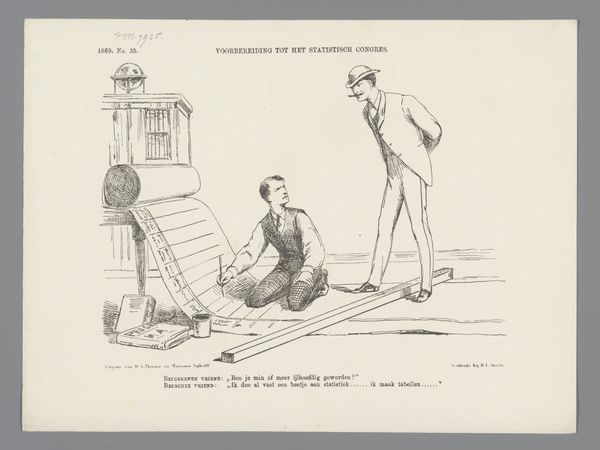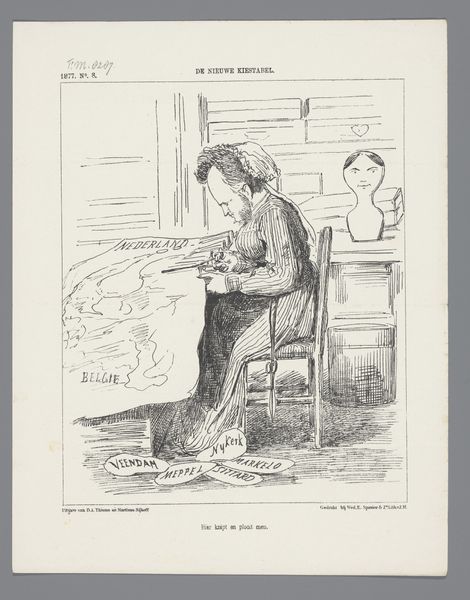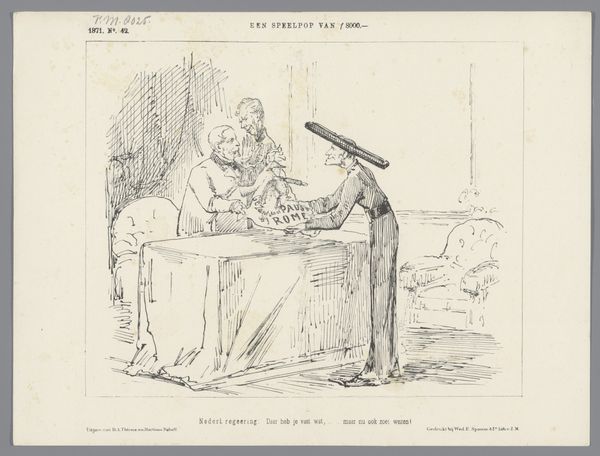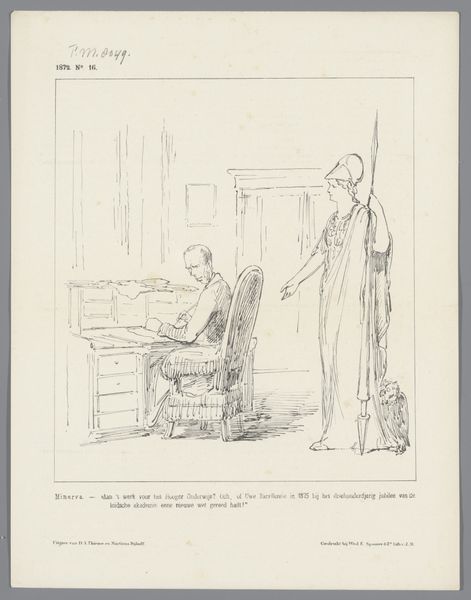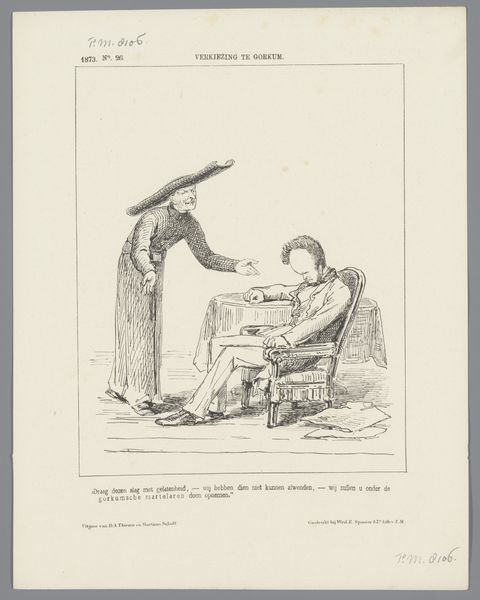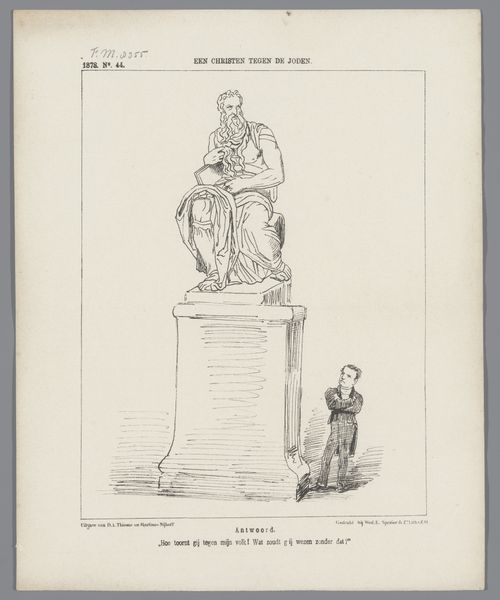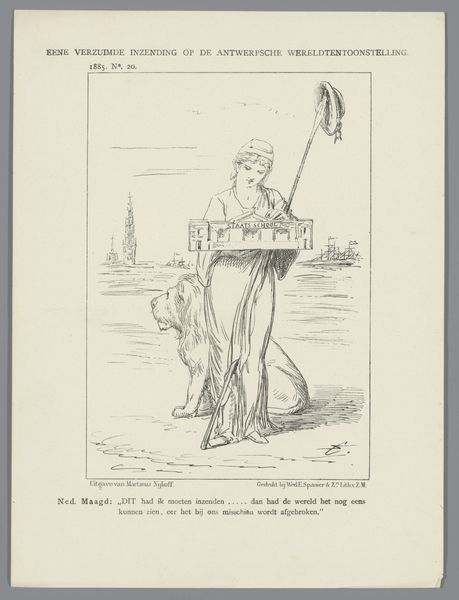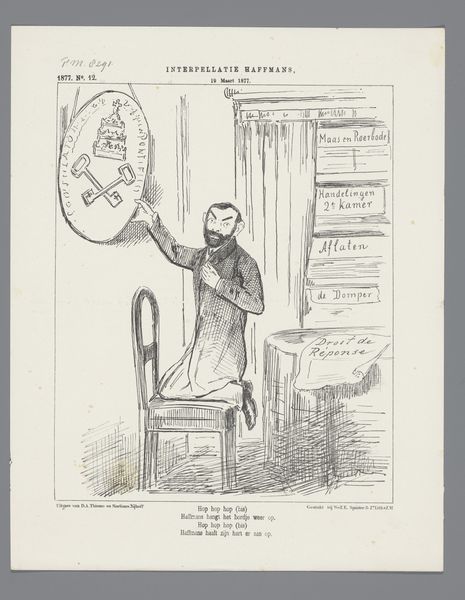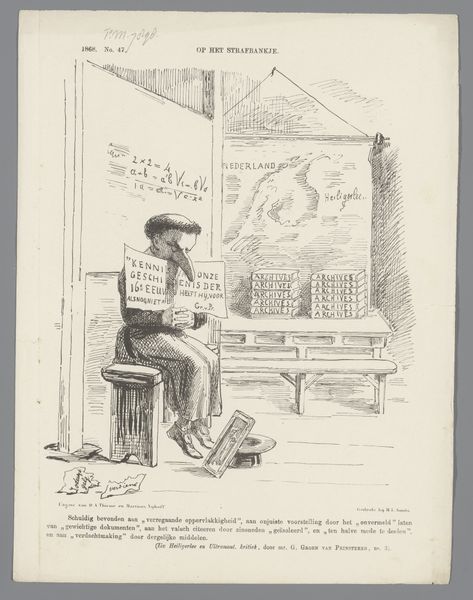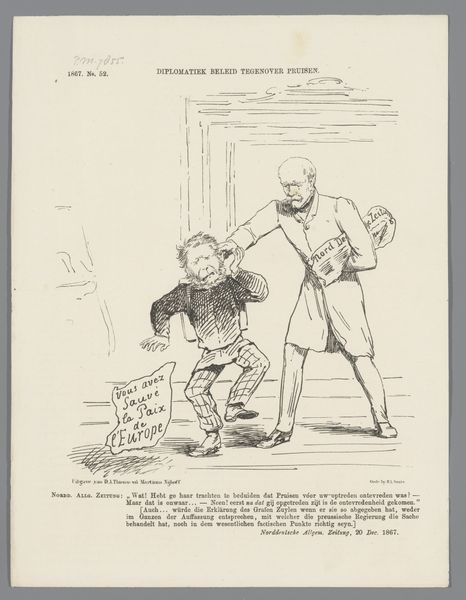
Dimensions: height 275 mm, width 215 mm
Copyright: Rijks Museum: Open Domain
This political cartoon was produced in 1872 by Johan Michaël Schmidt Crans, using a printmaking technique called lithography. A design is drawn on a flat stone with a greasy crayon, and then printed. In this case, it has created an image meant to make a political point. The focus of the cartoon is Blussé, and his relationship to income tax, represented here as a broken barrier he sits above. Lithography was a major means of mass communication at this time, rapidly adopted for newspapers, posters and other printed matter. This made it an ideal medium for political commentary, allowing artists to quickly respond to current events and circulate their views widely. Consider the labor involved: the artist's hand drawing the image, the work of preparing the lithographic stone, and the physical process of printing. This image is not just a representation, but an artifact of a specific historical moment, reflecting the social and political concerns of its time. By understanding its making, we gain deeper insight into its meaning.
Comments
No comments
Be the first to comment and join the conversation on the ultimate creative platform.
